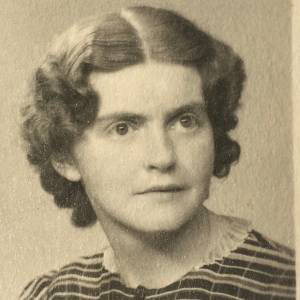Book of the duchess: at Michael's father's tomb
Number 7: Michael again meets the lady who attracted him, this time in the Minster, and still does not suspect her of being the duchess. She surprises him while he is visiting the tomb of his parents, who her father and Guillot murdered. She does not realise that he does not know who she is.
The plot episode 6 (summarised from the text of Lorna’s novel)
The duchess Jacqueline had a means of checking whether or not the young man that she had seen in the crowd was a Saint Étienne: by comparing his likeness with that of his (possible) dead ancestors sculpted on effigies in the minster.
When Jacqueline arrived at the minster, she was surprised to find there the young man himself. Viewed standing next to his father’s tomb, it was absolutely obvious that Michael was a Saint Étienne.
Jacqueline and Michael exchanged a few words, Michael still completely unaware of Jacqueline’s identity, other than as the lady with whom he had shared a smile earlier in the day.
When Jacqueline returned to the castle, her Provost Marshal Guillot tried to persuade her that Michael was a dangerous enemy. Jacqueline was not convinced of Guillot’s claims and ordered him not to harm Michael.
Lorna’s remarks
This picture, with its very careful attention to detail, serves as a very good contrast with the one before. The coats of arms are of course important, and the clearer colours show a great advance on the muddy tones of the old series. Many effects impossible in the older pictures have been attempted, for instance the veil and the departure of poor Michael from his interminable blue. Formerly the difficulties of getting likenesses demanded that those who in the first picture adopted definite colours would have to stick to them, but it is not so necessary now. I think that he is better for the change, although I am told he looks effeminate. However, that at least counteracts his exceedingly ‘girly’ looks in some of the early pictures.
A word on costume: the later pictures adhere more or less accurately to the fifteenth century fashion and Michael’s short doublet here and is armour in Number 25 are very much à la mode for that date, but the series was begun when I had no technical interest in costume and very little knowledge of the differences in fashions of the Middle Ages. To me then Medieval was a vague term covering any date between 1066 and 1485*. Hence the manifold inaccuracies and discrepancies. However, latterly all costumes are fifteenth century because I admire their taste.
*Now considered the period from the fifth to the fifteenth century. See https://en.wikipedia.org/wiki/Middle_Ages
- 15
- 0
- Apple iPhone 11
- 1/100
- f/1.8
- 4mm
- 100

Comments
Sign in or get an account to comment.


